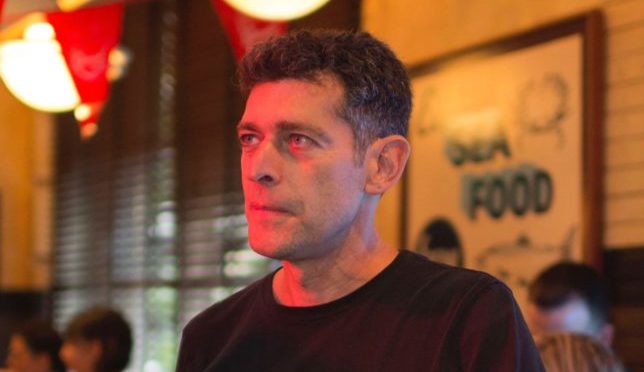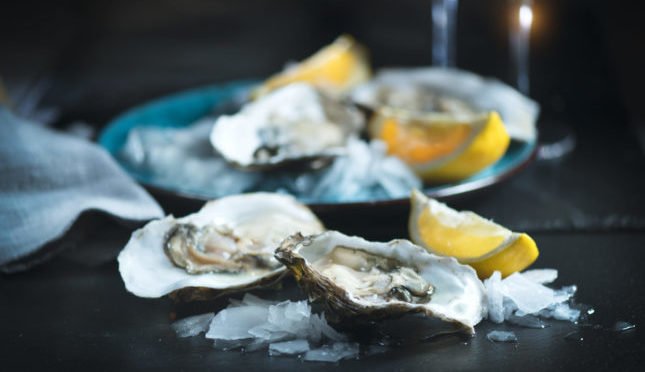As summer hangs heavily over much of the country, chilled oysters and wine become increasingly appealing. But which combinations are best? Worth spoke with Rowan Jacobsen, oyster expert, environmental journalist and cofounder of website Oyster Rater, about how best to enjoy the bivalves, where to source them and how they’re helping restore our waters, two grams of nitrogen at a time.

Q: Are there any regions at risk of becoming too contaminated to sustain edible oysters?
A: It’s definitely getting worse because water quality is declining everywhere and pollution’s a constant issue. A lot of farms near population centers get closed down when there’s a big rain event, because water quality goes down, and E. coli is a concern. The good news is the authorities give oysters a very high level of scrutiny, and oyster companies, even the old school ones, have become real water quality advocates. Taylor Shellfish and Hama Hama Oysters work very closely with the Puget Sound Restoration Fund to promote water quality, for example.

I like to source oysters grown in national parks or really remote areas, like Raspberry Points from Prince Edward Island and Discovery Bay oysters. Lots of Maine oysters are from Acadia National Park. In Cape Cod, you go out toward Wellfleet and the ratio of Atlantic Ocean to people is significantly in favor of the ocean.
Are oysters at risk of becoming extinct?
Oysters don’t mind water pollution and actually thrive in fairly low-quality water, so we don’t need to worry about them going extinct.
Can you tell me what factors influence oyster flavor?
I like to use wine as an example, with the big three considerations being the grape, the place, the winemaker. You can map that straight onto oysters: There are five different species of oysters; there’s the “merroir”–the terroir of the oyster world–which includes the water temperature, salinity and plankton types that oysters eat; and the grower. Some oysters are tumbled: The oyster is moved around in a cage on a line that’s just under the surface and is constantly shaken, or some growers mechanically tumble their oysters. The tumbling leads to deeper cups, stronger shells and firmer muscles.
Kumamotos are very delicious, very slow growing oysters, so they’re always more expensive. A tumbled oyster is a labor intensive, higher end oyster. Wild oysters are the cheapest.
You mentioned wine. What do you like to drink with oysters?
Lots of wines and beers are good with particular oysters in particular moments, but no matter what oysters you’re eating, Chablis is always a good pairing. There are a lot of subpar Chablis out there, so you have to choose carefully. I really like the Domaine William Fèvre portfolio, because they have so many vineyards in the premier and grand crus, but as long as you look for premier and grand cru vineyards from producers with a long track record, you can’t go wrong.

Oysters have such a weird mix of flavors: a lot of umami and a lot of salt, so it can be a real challenge for wine. Sometimes you can just be left with too much minerality and a mouth full of metal.
That’s particularly true with East Coast oysters. We’ve got this rule “any dry acidic white with oysters” that we’ve been applying to Eastern oysters, and it’s insane. It’s like not differentiating between red and white wine. Oysters are really different from other food, and they need different wines.
Do you have recommendations about which kinds of oysters to eat in the summer versus in the colder months?
My rule is to follow the frost line, because oysters in cold water get crisper, and in warm water they can get a little lazy. In warm water, life is easy, so they get all flabby and the texture is not as good. But also: The warmer the water, the more active all the bacterial things are in the water, so the risk of food poisoning goes up. If you eat oysters from southern waters in the summer, your risks are truly rising.
You’ve mentioned “name insanity” as a recent trend in oyster nomenclature. What are your favorite fanciful names?
I wish oyster farmers would stop doing that. Oysters used to be named for the place, like Malpeque or Wellfleet. Raspberry Point is a real point, but then everybody in Prince Edward Island began naming oysters after berries: Blackberry Point, Gooseberry Bay—it’s just absurd. I’m also not a fan of the name Lady Chatterley, which is an actual oyster name. You shouldn’t have to use sex to sell your oyster.
Can you tell me about the differences between types of oysters?
The Olympia is the only species native to the West Coast. It’s a beautiful oyster. It never gets much bigger than a 50-cent piece, and it takes four years to get that large. It’s not a good commercial oyster but the flavor is spectacular.
There’s the European Flat, the native oyster from Europe. It does well in the wild but doesn’t like to be farmed. It’s got a much rounder, scalloped shell and a strong coppery, metallic flavor. Some people love it, but a lot of people hate it.
The East Coast oyster is native from Canada’s Maritime provinces to the Gulf Coast. It has a plain grey shell and ivory-colored flesh and tends to have that briny Atlantic beachy flavor.
The Pacific oyster is native to Japan but the most farmed by far because it’s really easy to grow, has those beautiful purples and pinks on its shell and the shell is more frilly. It’s really pretty. It has more of a kelpy, estuary flavor, like the taste of a watermelon rind with a little lowtide funk.
What are the biggest misconceptions people have about oysters?
There’s an assumption that wild oysters are better than farmed oysters. We’ve been trained to think “wild good, farm bad” but with shellfish, not just oysters, it’s kind of been flipped around. There are no free-range oysters. They just want to feed, and they can do that on a farm. The main difference versus the wild is that in the wild they’re competing with each other for resources like access to water. In a farm environment they all get their space, so they’re coming as close to leading their natural lives as any part of our food chain.
The other part of that is the feed. The problem with shrimp and salmon is the feed; we’re dumping good nutrients in the water, some of which make it into the animal, some of which miss the animal entirely. We’re polluting the water with tons of nutrients. With shellfish, it’s the reverse. We’re actually taking nutrients out of the water. Every oyster removes approximately two grams of nitrogen from the water.
Every single oyster?
Every single oyster. It adds up because a typical shellfish farm will have about a million oysters per acre and will sell 10 million oysters a year. It’s a lot of nitrogen coming out of the water.
How else do oysters influence the environment?
There’s a lot of interest in using oysters for reef restoration. It’s part of a new trend of using green infrastructure instead of gray infrastructure. In other words: using plants and animals to build barriers. Scientists are increasingly recognizing that in terms of bang for the buck, it’s much easier and cheaper to work with plants and animals than it is to build seawalls and other purely physical systems that are going to block out storm water.
Oyster reefs have a naturally corrugated structure that is exactly what you want for displacing wave energy. You can have this smart wall of oysters, and then salt marsh behind the oysters, and it’s a complex structure, displacing energy in every direction and really dissipating it. Much less energy gets to land, which means less erosion. Now reinsurance companies are recognizing this, which I never thought I’d see.
Are there specific cities or localities in the U.S. where this is being done?
North Carolina is a leader on this stuff, and the Gulf Coast. The first insurance policy on a reef is actually a coral reef, and it was just taken out in Quintana Roo, Mexico. There’s going to be more big projects like this because it makes sense.









